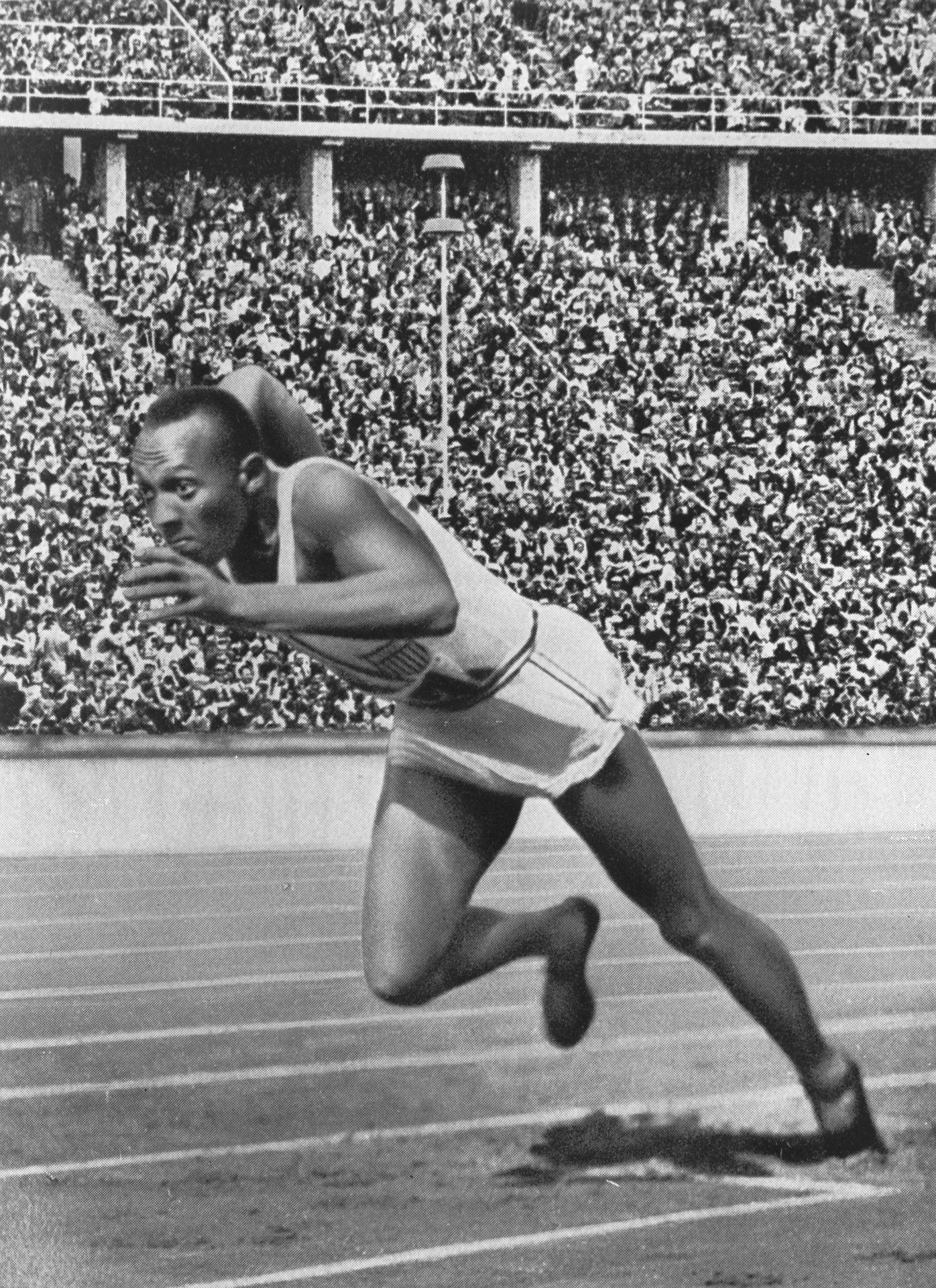James Cleveland Owens, also known as Jesse, was an American sprinter and long-distance athlete known for his participation in the 1936 Summer Olympics, where he won four gold medals and was the star of the Games. He is considered by many to be the greatest sports character of the 20th century and Per others is an icon, the very symbol of the Olympic Games.
Born on September 12, 1913 in Oakville, Alabama, at the age of eight he moved with his family to Cleveland, Ohio. The name Jesse give it to him when he moves with his family to Cleveland and to a teacher who asks his name James answers J.C., his initials, but with the strong southern accent that finds himself the teacher does not understand it well and here, for her and for everyone, becomes Jesse. At the beginning of his story Jesse knows misery and poverty, and lives according to the philosophy of “making do for a living”, like millions of other black boys in the period of the American depression. Before becoming a true myth of athletics, he has the opportunity to do various humble jobs, from shoeshine to delivery boy, from gardener to ice cream maker.
Jesse Owens shows an obvious talent for sports from an early age. He does not have the money to buy expensive equipment for other sports other than athletics, so he devotes himself to running disciplines. In the US it is the hot period of racial segregation when in 1933 Owens is forced to some difficult experiences: he lives outside the university campus with other African-American athletes, in trips with the sports team he eats in restaurants for only blacks. During his studies he continued to work to pay for his university.
He is noticed by the University of Ohio who takes him to train. In the year leading up to the Olympics that will make him king of athletics, on May 25, 1935 at the Middle West Championships at the University of Michigan, Owens amazes the entire country and makes known his name overseas, in fact, in one race, Owens sets 3 world records and equals a quarter (which already belonged to him). In what, in his autobiography, “The Jesse Owens Story,” he calls day of days, Jesse Owens in less than an hour equals the world record in the 100 meters, establishes that in the long jump, He won the 200-meter race and the 200-meter hurdle race.
The following year there would be the Olympics, the Nazi regime does not leave the United States so quiet that they would like to boycott the games but in the end they decide to participate. In August 1936, Owens flew to Berlin to take part in the eleventh Olympics. His name is linked to history because of the circumstances that saw him champion and athlete-symbol of the Berlin Olympics of 1936, and starred along with Hitler of a famous episode. Owens wins 4 medals at the Olympic Games: in the 100 meters , in the 200 meters , in the long jump and in the relay 4 x 100 . So he won another title, for the fury of Hitler, who left the balcony of the tribune authorities to avoid attending the final award ceremony of a black man who triumphs before the Aryans. We will have to wait 48 years, at the 1984 Summer Olympics in Los Angeles, to see another man, the American Carl Lewis, capable of repeating Owens’s feat. The story of Jesse Owens, at the 1936 Berlin Olympics, gave the world an indelible undertaking and message over time.
After the Olympics, Owens continued to compete and win and then became a coach. He died at age 66, in poverty, abandoned, taken away by lung cancer in Tucson, Arizona, on March 31, 1980. In 1984, a street in Berlin passed right in front of the Olympic Stadium. After 40 years Jesse Owens remains today a symbol of freedom; the symbol of the champion who rose above the Nazi reluctance in front of the first representative of racial discrimination.
Sara De Luca 4N
